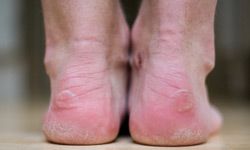You don't need pedicures to have healthy feet, but adding some moisture to dry, cracked heels would be a good start. You probably don't pay much attention to them, but your feet work hard for you, even if you usually neglect them when it comes to daily hygiene. You wash them -- isn't that good enough? It's a start, but it takes more to keep your feet healthy. You don't need to get pedicures, but you do need to think about more than just keeping them clean. Healthy feet aren't dry, callused or cracked, so they need a little care beyond a simple lather. We have five tips to help you make moisturizing your feet part of your daily routine, beginning with how to choose the right cream.
Advertisement

